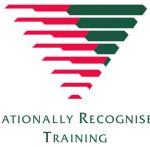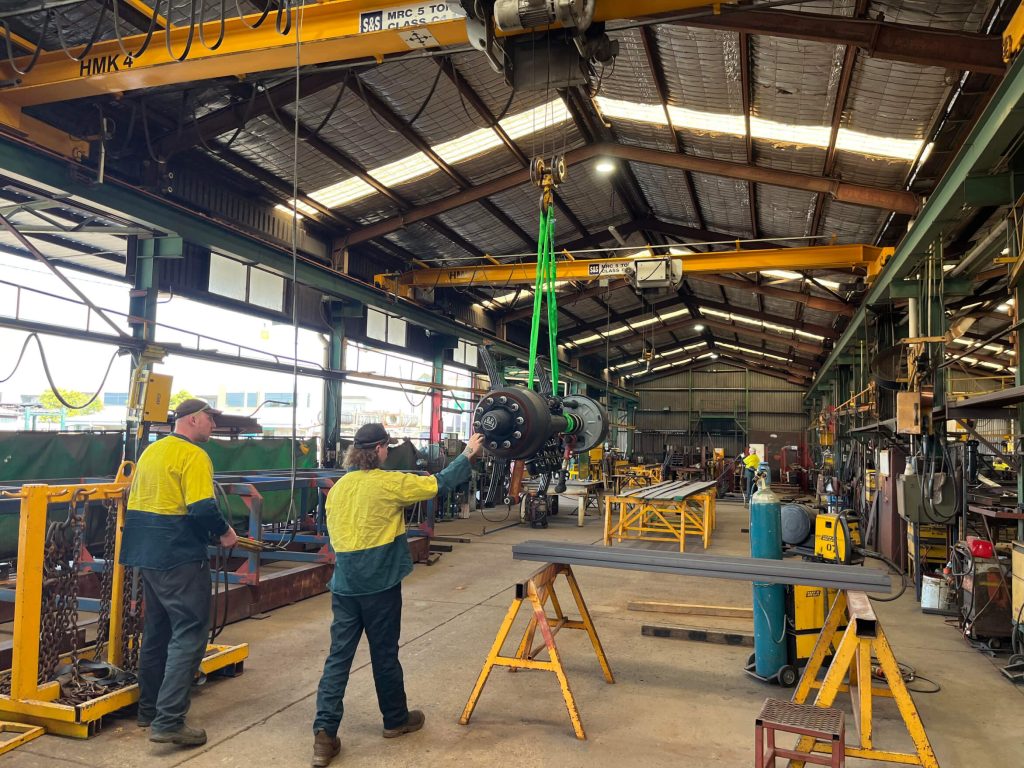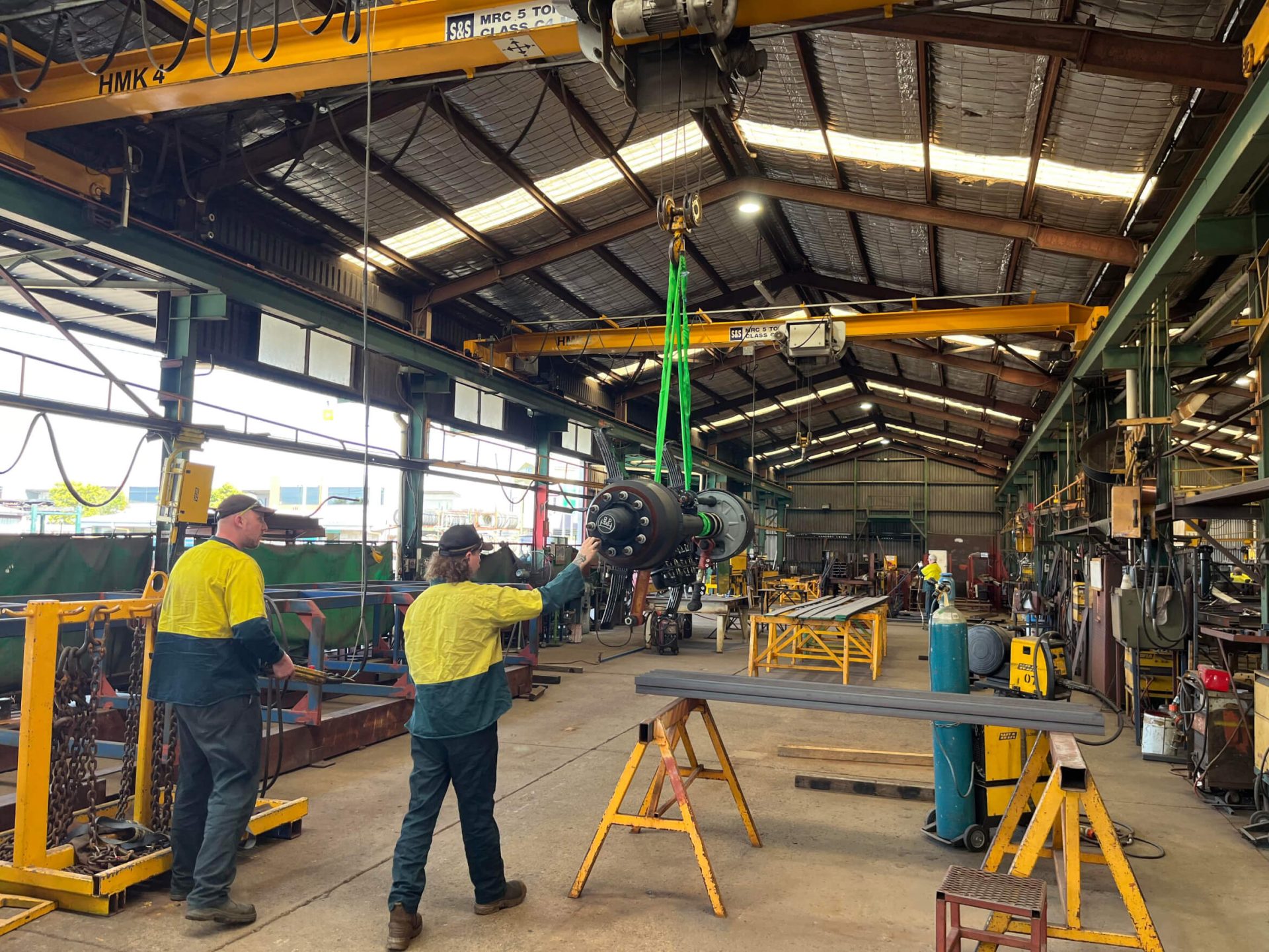Explore Our Courses
Course Price
$495
Duration
1 Day
Max Students
10
Course Delivery
Online + Practical

Outcome
Nationally Recognised Statement of Attainment
Training Location
Overview
This unit describes the skills and knowledge required to conduct lifting operations in the resources and infrastructure industries, including developing preliminary lifting plans, directing load movements, connecting load to movement devices and confirming load stability.
It applies to those working in operational roles. They generally work under supervision to undertake a prescribed range of functions involving known routines and procedures and take some responsibility for the quality of work outcomes.
Licensing, legislative and certification requirements may apply to this unit and can vary between states, territories and industry sectors. Users must check requirements with relevant body before applying the unit.

Course Outline
Performance criteria describe the performance needed to demonstrate achievement of the element.
Plan and prepare for lifting operations
- Module 1:
Obtain, interpret and confirm work requirements - Module 2:
Access, interpret and apply documentation to conduct lifting operations - Module 3:
Identify and address potential risks, hazards and environmental issues and implement control measures according to site requirements - Module 4:
Select and wear personal protective equipment according to site requirements - Module 5:
Develop preliminary lifting plan according to job and site requirements - Module 6:
Check and confirm job feasibility and schedule with load designer and personnel involved in lifting operations - Module 7:
Finalise and confirm lifting plan according to job and site requirements
Prepare for lifting
- Module 1:
Identify, select, inspect and assemble lifting equipment, materials and tools required for planned lift according to manufacturer specifications and site requirements - Module 2:
Label unserviceable equipment, materials and tools according to site requirements
Move loads
- Module 1:
Identify and confirm safe working loads and centre of gravity according to manufacturer specifications and site requirements - Module 2:
Direct load movement, according to site requirements, using standard load moving signals - Module 3:
Perform load moving according to lifting plan, manufacturer specifications and site requirements - Module 4:
Connect lifting gear to load according to manufacturer specifications and site requirements - Module 5:
Connect load to movement device using appropriate and certified equipment according to manufacturer specifications and site requirements - Module 6:
Comply with required specifications during placement and securing of load
Foundation skills
This section describes those language, literacy, numeracy and employment skills that are essential to performance but not explicit in the performance criteria.
| Skill | Description |
|---|---|
| Numeracy |
|
| Self-management |
|
Assessment requirements
Modification history
| Release | Comments |
|---|---|
| Release 1 | This version first released with RII Resources and Infrastructure Industry Training Package Version 5.0. |
| Release 2 | This version was released with RII Resources and Infrastructure Industry Training Package Version 7.1.
Performance Evidence amended to define types of hoists to be used in load moving. |
Performance evidence
The candidate must demonstrate the ability to complete the tasks outlined in the elements, performance criteria and foundation skills of this unit, including evidence of the ability to:
- conduct lifting operations on at least two occasions, including:
- checking and confirming job feasibility and schedule
- developing preliminary lift plans, identifying the following points:
- confirmed details of lifting and slinging requirements
- confirmed dimensions and mass
- site access and egress
- suitability and availability of materials
- tools and equipment
- identification of potential hazards
- probable control measures
- identification of site coordination requirements
- scheduling resources required for planned lift
- identifying, selecting, inspecting and assembling lifting equipment, materials and tools required for planned lift
- identifying and confirming safe working loads and centre of gravity, including using load charts and sling tags/charts
- performing load moving according to lift plan, including:
- vertical lift using electric or pneumatic chain hoists or cranes
- vertical lift using portable lifting equipment, including chain blocks and lever hoists
- lateral load movement or drifting load using multiple lifting devices.
During the above the candidate must:
- locate and apply relevant documentation, policies and procedures and confirm work activity is compliant
- implement requirements, procedures and techniques for lifting operations, including:
- planning and preparing for lifting and moving loads
- work effectively with others to conduct lifting operations in a manner that meets required outcomes, including:
- confirming job feasibility and schedule with lift designer and other relevant person/s
- directing the movement of the load using standard signals for load moving.
Knowledge evidence
The candidate must be able to demonstrate knowledge to complete the tasks outlined in the elements, performance criteria and foundation skills of this unit, including knowledge of:
- key policies, procedures and documentation required to conduct lifting operations, including:
- approved training schemes
- operational and maintenance procedures
- site and equipment safety requirements
- principles and techniques for developing preliminary lift plans, including:
- confirmed details of lifting and slinging requirements
- confirmed dimensions and mass
- site access and egress
- suitability and availability of materials
- tools and equipment
- identification of potential hazards
- probable control measures
- identification of site coordination requirements
- types, characteristics, technical capabilities and limitations of equipment required for lifting operations
- verbal and hand signal techniques for load moving
- principles and techniques for identifying and responding to relevant hazards and emergencies
- basic techniques for communicating job activities with others.
Assessment conditions
Mandatory conditions for assessment of this unit are stipulated below. The assessment must:
- include access to:
- personal protective equipment
- equipment required to conduct lifting operations
- relevant documentation
- be conducted in a safe environment; and,
- be assessed in the context of this sector’s work environment; and,
- be best assessed where infrastructure is available to facilitate lateral load movement using multiple lifting devices; and,
- be assessed in compliance with relevant legislation/regulation and using policies, procedures and processes directly related to the industry sector for which it is being assessed; and,
- confirm consistent performance can be applied in a range of relevant workplace circumstances.
Where personal safety or environmental damage are limiting factors, assessment may occur in a simulated work environment* provided it is realistic and sufficiently rigorous to cover all aspects of this sector’s workplace performance, including environment, task skills, task management skills, contingency management skills and job role environment skills.
Assessor requirements
Assessors must be able to clearly demonstrate current and relevant industry knowledge and experience to satisfy the mandatory regulatory standards as set out in the Standards for Registered Training Organisations (RTOs) 2015/Australian Quality Training Framework mandatory requirements for assessors current at the time of assessment and any relevant licensing and certification requirements. This includes:
- vocational competencies at least to the level being delivered and assessed
- current industry skills directly relevant to the training and assessment being provided
- current knowledge and skills in vocational training and learning that informs their training and assessment
- formal relevant qualifications in training and assessment
- having knowledge of and/or experience using the latest techniques and processes
- possessing the required level of RII training product knowledge
- having an understanding and knowledge of legislation and regulations relevant to the industry and to employment and workplaces
- demonstrating the performance evidence, and knowledge evidence outlined in this unit of competency, and
- the minimum years of current** work experience after competency has been obtained as specified below in an industry sector relevant to the outcomes of the unit.
It is also acceptable for the appropriately qualified assessor to work with an industry expert to conduct assessment together and for the industry expert to be involved in the assessment judgement. The industry expert must have current industry skills directly relevant to the training and assessment being provided. This means the industry subject matter expert must demonstrate skills and knowledge from the minimum years of current work experience after competency has been obtained as specified below, including time spent in roles related to the unit being assessed:
| Industry sector | Aqf indicator level*** | Required assessor or industry subject matter expert experience |
|---|---|---|
| Drilling, Metalliferous Mining, Coal Mining, Extractive (Quarrying) and Civil Infrastructure | 1 | 1 year |
| 2 | 2 years | |
| Drilling, Coal Mining, Extractive (Quarrying), Metalliferous Mining and Civil Infrastructure | 3-6 | 3 years |
| Other sectors | Where this unit is being assessed outside of the resources and infrastructure sectors assessor and/or industry subject matter expert experience should be in-line with industry standards for the sector in which it is being assessed and where no industry standard is specified should comply with any relevant regulation. | |
*Guidance on simulated environments has been stipulated in the Companion Volume Implementation Guide located on VETNet.
**Assessors can demonstrate current work experience through employment within industry in a role relevant to the outcomes of the unit; or, for external assessors this can be demonstrated through exposure to industry by conducting a minimum number of site assessments as determined by the relevant industry sector, across various locations.
*** While a unit of competency does not have an AQF level, where a unit is being delivered outside of a qualification the first numeric character in the unit code should be considered as the AQF indicator level for assessment purposes.
What You’ll Achieve
Upon completing this course, you will:
- You will receive a RIIHAN203E – Conduct Lifting Operations once you have been deemed competent, issued by Halo Nation Training (RTO No. 32485).
| Upcoming Dates | Duration | Location | Availability | Book |
|---|---|---|---|---|
|
No courses currently available, check back soon! or call us (07) 4849 4525 |
||||
| Upcoming Dates | Duration | Location | Availability | Book |

